Back Story: Karl White’s history of fishing display
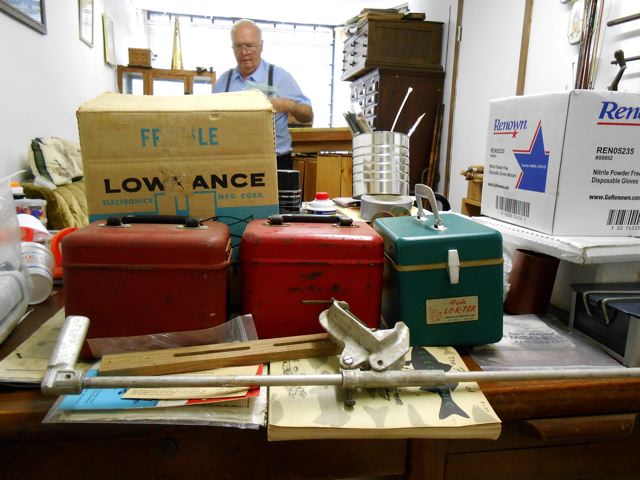
Karl White hasn’t set up a display booth at the Forrest Wood Cup for a couple of years, but he’ll be back this year when the FLW Expo opens its doors in the Shreveport Convention Center Aug. 16-18.
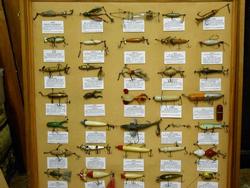 White, whose vast collection of fishing tackle and equipment is unequalled, is bringing a few old friends with him – Ole Evinrude, the founder of Evinrude; Carl Kiekhaefer, who started Mercury Marine; Lauri Rapala, whose name says it all; and Carl Lowrance, whose “little green box” transformed the fishing world. Of course, White never actually knew most of the pioneers of fishing tackle and equipment, but in a real sense he became a friend and fan of all of them through the products that they introduced. After visitors to the FWC Expo walk through his display booth and view “A History of Fishing,” they, too, will know a lot more about the innovators who helped grow the sport.
White, whose vast collection of fishing tackle and equipment is unequalled, is bringing a few old friends with him – Ole Evinrude, the founder of Evinrude; Carl Kiekhaefer, who started Mercury Marine; Lauri Rapala, whose name says it all; and Carl Lowrance, whose “little green box” transformed the fishing world. Of course, White never actually knew most of the pioneers of fishing tackle and equipment, but in a real sense he became a friend and fan of all of them through the products that they introduced. After visitors to the FWC Expo walk through his display booth and view “A History of Fishing,” they, too, will know a lot more about the innovators who helped grow the sport.
The Oklahoma collector and his wife Beverly will have plenty of rare and unusual articles of fishing history on display at the Expo – everything from ancient Egyptian fish hooks and pre-Columbian fishing tools, to Chinese fishing poles and early American reels worth big bucks. White will also conduct a tackle-collecting seminar at 11 a.m. on Saturday in the Expo, and answer questions that visitors might have about their collectibles.
As varied as White’s display is, it represents only a small portion of his collection. If he took his entire assemblage of fishing tackle, boats, motors and everything else associated with the sport of fishing to the Expo, it would fill up most of the Shreveport Convention Center – or a museum.
Among the rarities that await Expo visitors are products associated with:
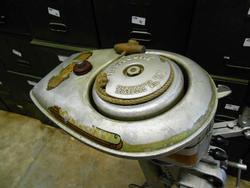 • Mercury. Mercury Marine started as a company that made outboard motors for others. In 1938, Chicago mail-order retail Montgomery Ward offered an inline 3-cylinder outboard called the Thor. The company that made the motor in Cedarburg, Wis., fell on hard times and was sold to a 33-year-old engineer named Carl Kiekhaefer. His company continued to make outboards for Montgomery Ward under the Thor and Sea King lines, but in 1939 Kiekhaefer also began to produce a 3-horsepower version that he named for the mythological messenger of the gods known for his speed: Mercury. Kiekhaefer won a contract with Western Auto to produce the Wizard line of outboards in 1940. If that wasn’t enough, by the end of World War II Keikhaefer Corporation also had become the largest manufacturer of chainsaws in the world. It was in the post-war years that Keikhaefer decided the company needed more room to grow. He bought a dairy farm in Fond Du Lac, Wis., and converted it into the production facility for the Mercury line, which became the company’s focus.
• Mercury. Mercury Marine started as a company that made outboard motors for others. In 1938, Chicago mail-order retail Montgomery Ward offered an inline 3-cylinder outboard called the Thor. The company that made the motor in Cedarburg, Wis., fell on hard times and was sold to a 33-year-old engineer named Carl Kiekhaefer. His company continued to make outboards for Montgomery Ward under the Thor and Sea King lines, but in 1939 Kiekhaefer also began to produce a 3-horsepower version that he named for the mythological messenger of the gods known for his speed: Mercury. Kiekhaefer won a contract with Western Auto to produce the Wizard line of outboards in 1940. If that wasn’t enough, by the end of World War II Keikhaefer Corporation also had become the largest manufacturer of chainsaws in the world. It was in the post-war years that Keikhaefer decided the company needed more room to grow. He bought a dairy farm in Fond Du Lac, Wis., and converted it into the production facility for the Mercury line, which became the company’s focus.
• Minn Kota. Though electric boat motors predate gas-powered motors, it wasn’t until 1934 that O.G. Schmidt of Fargo, N.D., combined a starter motor from a Ford Model A, a flexible shaft and a propeller to fashion an electric motor that clamped to a boat’s transom or gunnel. Other fishermen convinced Schmidt that he was on to something, and he formed a company to manufacture the motors. Because his plant was so close to the Minnesota state line, Schmidt decided to call the company Minn Kota.
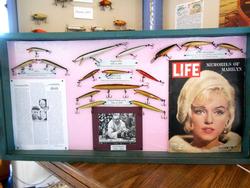 • Rapala. The Swedish company’s balsa minnows date back to 1936, but weren’t introduced to the United States until the 50s. The original jerkbaits were covered with candy wrap foil and a malleable film that protected the finish. No other lure before or since made such an impact when it was first brought to the American public’s attention via an article in Life Magazine.
• Rapala. The Swedish company’s balsa minnows date back to 1936, but weren’t introduced to the United States until the 50s. The original jerkbaits were covered with candy wrap foil and a malleable film that protected the finish. No other lure before or since made such an impact when it was first brought to the American public’s attention via an article in Life Magazine.
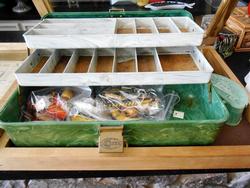 • Plano. An Illinois company that perfected injection molding, Plano opened its doors in 1932. The company made plastic boxes, covers and components for various uses, and in 1952 it added tackleboxes. No doubt company founder and avid angler Warren Henning foresaw the demand for lighter and more durable boxes to replace the heavy wooden or metal boxes of the day. That first Plano tacklebox out of the molding shop was mottled green and white, similar to the one White will display in Shreveport.
• Plano. An Illinois company that perfected injection molding, Plano opened its doors in 1932. The company made plastic boxes, covers and components for various uses, and in 1952 it added tackleboxes. No doubt company founder and avid angler Warren Henning foresaw the demand for lighter and more durable boxes to replace the heavy wooden or metal boxes of the day. That first Plano tacklebox out of the molding shop was mottled green and white, similar to the one White will display in Shreveport.
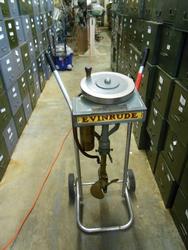 • Evinrude. Ole Evinrude’s first outboard motor, which didn’t have a skeg and generated about 2 horsepower, was produced beginning in 1907 when Evinrude was 30 years old. Evinrude’s design was an instant hit and the mechanical configuration of his patented “marine propulsion mechanism” became the model for all motors built since. Evinrude Motor Company was founded in Milwaukee in 1909 to accommodate the burgeoning demand. The hand-built Evinrude weighed 62 pounds and cost $62. A 1910 newspaper advertisement advised: “Don’t Row…use the Evinrude Detachable Row Boat Motor…Clamped on any square stern boat in 2 minutes…”
• Evinrude. Ole Evinrude’s first outboard motor, which didn’t have a skeg and generated about 2 horsepower, was produced beginning in 1907 when Evinrude was 30 years old. Evinrude’s design was an instant hit and the mechanical configuration of his patented “marine propulsion mechanism” became the model for all motors built since. Evinrude Motor Company was founded in Milwaukee in 1909 to accommodate the burgeoning demand. The hand-built Evinrude weighed 62 pounds and cost $62. A 1910 newspaper advertisement advised: “Don’t Row…use the Evinrude Detachable Row Boat Motor…Clamped on any square stern boat in 2 minutes…”
• Lowrance. Though the “little green box” is often referred to as the first Lowrance sonar, it’s predated by the red box flasher manufactured for founder Carl Lowrance when the company was located in Joplin, Mo. Dissatisfied with the quality of the red-box units delivered in 1958, Lowrance decided to take over manufacturing in 1959. It made all the difference. Owing to the growing popularity of its Fish Lo-K-Tor fishfinders and the need to expand, the Lowrance company relocated to Tulsa in 1964.
• Motorguide. Before Mississippi entrepreneur G.H. Harris came along, anglers who wanted to move along a shoreline slowly either had to scull the boat with a paddle or use an electric trolling motor with tiller steering. In 1947 Harris designed a foot-control model and a patent was granted for it in March 1951. Harris and a partner started making and selling the trolling motor, but in 1961 Harris granted manufacturing rights to Herschede Hall Clock Company of Starkville, Miss., in return for royalties. The company that started life as Guide-Rite, later became MotorGuide.
• Folgers. How does the Folgers coffee can, circa 1947, in White’s display figure in fishing tackle history? In a big way, as it turns out. In 1947, Texas inventor R.D. Hull used the top from a Folgers can to make the prototype of a new type of reel. According to Hull, his reel would not backlash. Hull successfully pitched the idea to officials of Tulsa’s Zero Hour Bomb Company, which made electric time bombs used in fracturing deposits of oil to make it more accessible to drilling. The company’s first reel, offered for sale in 1949, was called the Standard. A Model 22 and a Model 33 followed, with the latter proving to be wildly popular with fishermen who were making the switch to “spinning line,” as monofilament was known at the time. That first Folgers prototype reel is now encased in the lobby of the company’s Tulsa headquarters. In 1956, the Zero Hour Bomb Company’s name was shortened to Zebco.
As a proud sponsor of FLW, Walmart offers one of the most comprehensive selections of fishing tackle and equipment in the industry. To find great deals on Walmart’s entire collection of rods, reels, baits and electronics, click here.